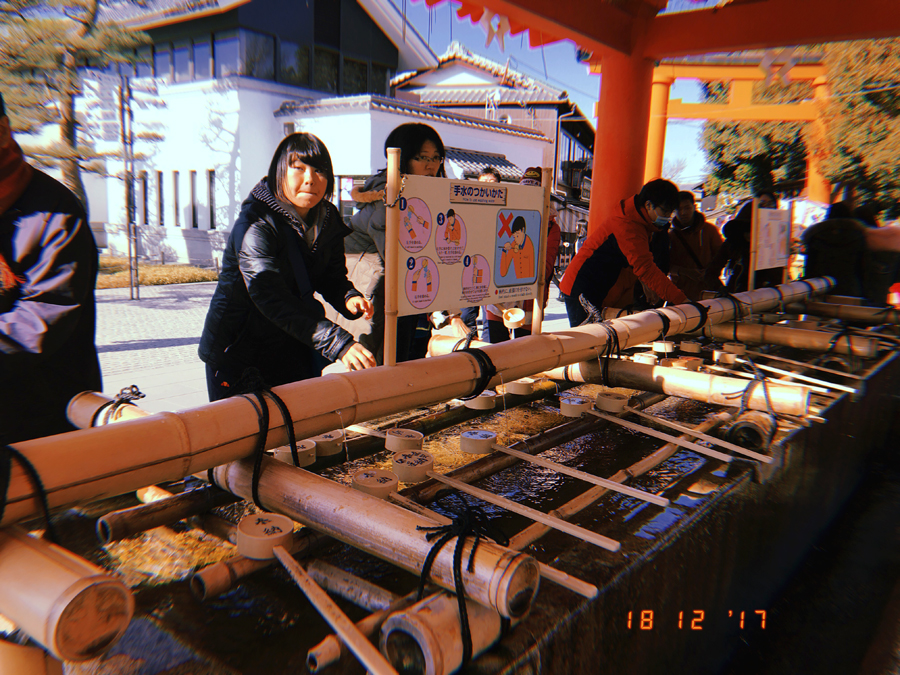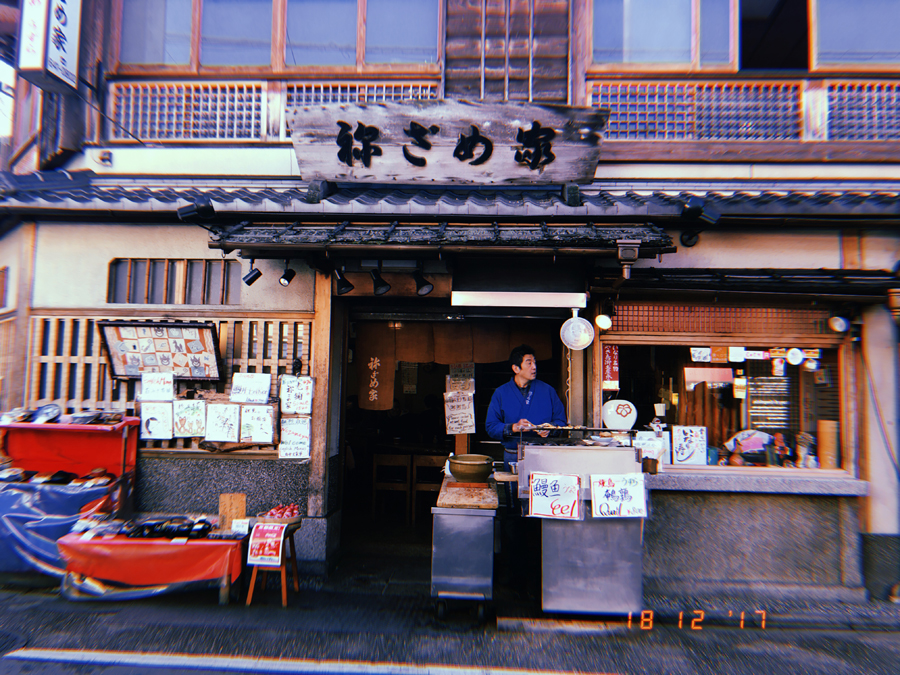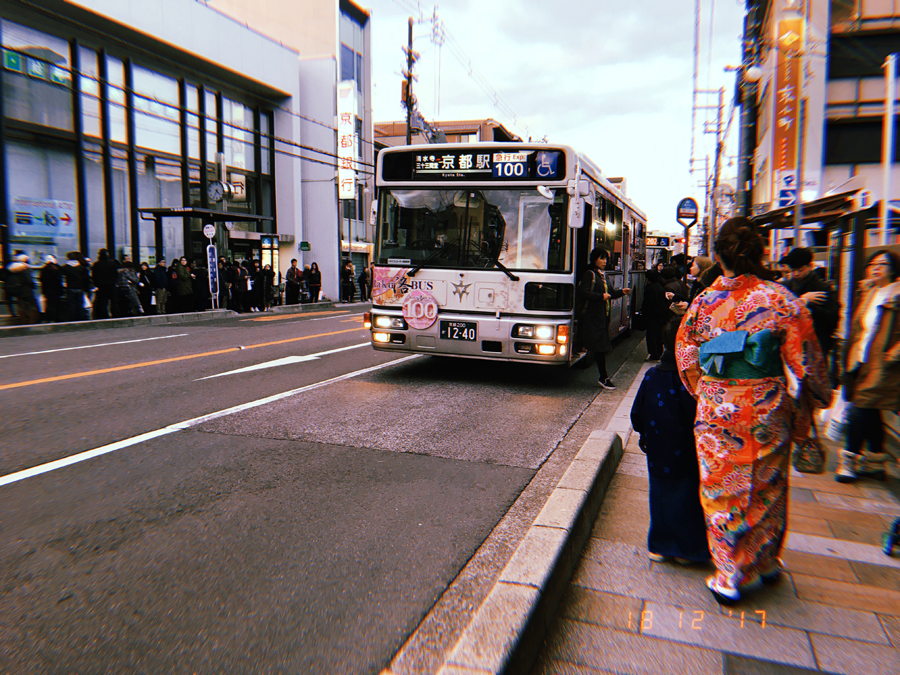Part 2: When in Rome, do as the Romans do
By: AUDREY ANCHIRINAH
Apr 04, 2018

Purification process at temple in Kyoto, Japan.
About "A Black Woman in Kimono" series
Claflin senior Audrey Anchirinah explores her experiences during study abroad in Japan as a black woman through an op-ed series, “A Black Woman in Kimono.” Using anecdotes drawn from experiences, she explores how Japan, though considered a first world country, still has long way to go when it comes to understanding race as well as embracing racial differences. In this series, she also explores how foreigners, especially Americans, navigate through the Japanese way of life. The target audience for this series is black college students as well as recent black college graduates who want to study abroad or travel abroad. This is part 2.
I knew quite a lot about American culture before I came over for my college education. However, you realize that no matter how knowledgeable you are, you will still experience cultural shock.
Cultural shock is not a negative phenomenon, but navigating a foreign space can either be a smooth transition or take a turn for the worse. The saying “when in Rome, do as the Romans do” simply means when visiting a foreign land, follow the customs of those who live in it.
Japan has different customs as compared to America or any other country. Japan is known widely as being one of the politest countries in the world. Therefore, most foreigners might come off as aggressive to Japanese society.
For instance, the Japanese in almost every sentence say a polite “sorry” in case they are confused or do not understand what you are saying. This happens especially during customer service. I learned to be gentle in my mannerisms as well as smile often when I found myself in restaurants or shops because of the language barrier. The Japanese are very kind and extremely helpful when they see foreigners looking lost. I cannot tell you the number of times a lot of grannies tried to help me pick the best fish at the supermarket.
Another important thing about Japan and its educational system is that we were required to attend every class because attendance was a part of the grade. Some American schools, unlike mine, do not consider attendance. This made it hard for students who were not used to attending class every day to adjust.
In addition, we did not have many holidays, so students wanting to travel had no choice but to skip classes. In order to avoid losing a lot of grade marks, most students planned ahead of time and made sure not to miss major tests and assignments. I was fortunate not to have to take any major classes, therefore I had enough free time to explore.
One major thing that will help make your study-abroad experience a very enjoyable one is to be open-minded and try not to compare your way of life to that of the country where you decide to study. In Japan, I learned how to bow and other mannerisms to help me navigate through, as well as to show my respect for the culture. Knowing how to use a pair of chopsticks before studying in Japan is great, but there is more to the culture than that.
Trying to live an American lifestyle in Japan might backfire and make you miserable. How? Though there are popular fast-food chains like McDonald’s and KFC in Japan, the menus cater to the culture. Japan prides itself on the eating fresh foods as seen in sushi. Portions served at these fast-food restaurants are small compared to America’s. The emphasis on fresh food as well as healthy living makes Japan one of the countries with some of the oldest and healthiest persons.
One very common practice in Japan that contributes to the healthy lifestyle is biking. Biking is an essential form of transportation, as everyone, old or young, bikes everywhere (supermarket, school, train station etc.). Most of us had to get bicycles, which were mostly used once, and we had to abide strictly to road rules. This is because bicycles are considered as a form of a vehicle. I biked a lot in those four months and I realized at the end of my program my physique was in quite a good shape.
I love to go outside my comfort zone and challenge myself a lot of times. In Japan, I challenged myself to visit an onsen. Onsens are very common in Japan and they are basically hot springs. It is a place where people go at the end of the day or the week to unwind in herbal hot waters.
Now the unique aspect of it, which makes foreigners hesitant, is that you have to be completely naked. Now I did not mind, but I was just worried about how they would react to seeing a black girl in there. However, that was not a problem. My friends who were brave enough to try an onsen with me loved it. It became a daily ritual for us to go unwind and socialize. I am back in the U.S and I cannot help but miss onsens.
Speaking of friends, I made friends from all over, including France, Sweden, Ecuador and Singapore. Below is a short video with some of my friends giving their perspectives on studying in Japan.
Video: https://youtu.be/phQnmUZNrCE
“In Japan, I had to learn everything by memory,” Sofie Magnusson from Sweden said. “In Sweden, it’s basically forbidden to just copy and tell what’s in the book, you need to apply your theories and write around that.”
In France, for my school, you don’t have to buy books.” Tarek Benhammouda from France said. “Our school schedule is not as rigorous like Japan.”

Man tends to his stall in Kyoto.

Streets of Kyoto, Japan